(All information courtesy of the instrument teams.)
![]() Previous IAU Circulars
Previous IAU Circulars
TITLE: GCN/SWIFT NOTICE
NOTICE_DATE: Thu 25 Feb 16 14:24:01 UT
NOTICE_TYPE: Swift-BAT GRB Position
TRIGGER_NUM: 675998, Seg_Num: 0
GRB_RA: 164.242d {+10h 56m 58s} (J2000),
164.482d {+10h 57m 56s} (current),
163.496d {+10h 53m 59s} (1950)
GRB_DEC: +53.655d {+53d 39' 19"} (J2000),
+53.569d {+53d 34' 07"} (current),
+53.923d {+53d 55' 22"} (1950)
GRB_ERROR: 3.00 [arcmin radius, statistical only]
GRB_INTEN: 99383 [cnts] Image_Peak=964 [image_cnts]
TRIGGER_DUR: 26.880 [sec]
TRIGGER_INDEX: 480 E_range: 25-100 keV
BKG_INTEN: 225352 [cnts]
BKG_TIME: 51544.10 SOD {14:19:04.10} UT
BKG_DUR: 64 [sec]
GRB_DATE: 17443 TJD; 56 DOY; 16/02/25
GRB_TIME: 51656.42 SOD {14:20:56.42} UT
GRB_PHI: 19.99 [deg]
GRB_THETA: 41.58 [deg]
SOLN_STATUS: 0x3
RATE_SIGNIF: 10.81 [sigma]
IMAGE_SIGNIF: 8.62 [sigma]
MERIT_PARAMS: +1 +0 +0 +5 +2 -1 +0 +0 +71 +0
SUN_POSTN: 338.17d {+22h 32m 41s} -9.16d {-09d 09' 24"}
SUN_DIST: 135.30 [deg] Sun_angle= 11.6 [hr] (West of Sun)
MOON_POSTN: 187.70d {+12h 30m 47s} -1.64d {-01d 38' 29"}
MOON_DIST: 58.50 [deg]
MOON_ILLUM: 93 [%]
GAL_COORDS: 153.55, 56.13 [deg] galactic lon,lat of the burst (or transient)
ECL_COORDS: 140.63, 42.45 [deg] ecliptic lon,lat of the burst (or transient)
COMMENTS: SWIFT-BAT GRB Coordinates.
COMMENTS: This Notice was delayed by more than 60 sec past the end of the trigger integration interval;
COMMENTS: probably due to it occurring during a Malindi downlink session.
COMMENTS: This is a rate trigger.
COMMENTS: A point_source was found.
COMMENTS: This does not match any source in the on-board catalog.
COMMENTS: This does not match any source in the ground catalog.
COMMENTS: This is a GRB.
COMMENTS: This trigger occurred at longitude,latitude = 14.35,10.64 [deg].
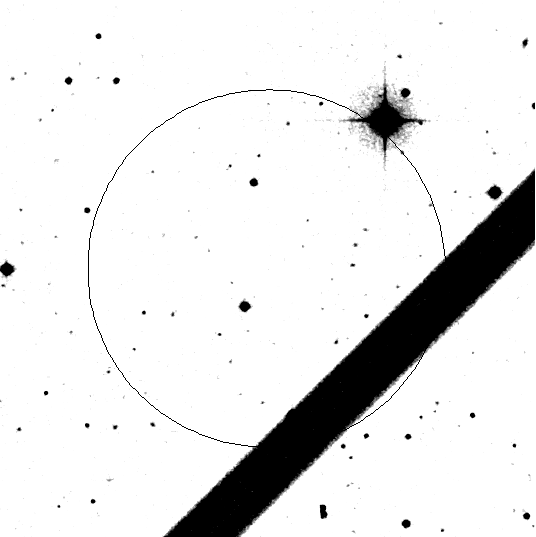
TITLE: GCN/SWIFT NOTICE
NOTICE_DATE: Thu 25 Feb 16 14:25:04 UT
NOTICE_TYPE: Swift-BAT GRB Lightcurve
TRIGGER_NUM: 675998, Seg_Num: 0
GRB_RA: 164.242d {+10h 56m 58s} (J2000),
164.482d {+10h 57m 56s} (current),
163.496d {+10h 53m 59s} (1950)
GRB_DEC: +53.655d {+53d 39' 19"} (J2000),
+53.569d {+53d 34' 07"} (current),
+53.923d {+53d 55' 22"} (1950)
GRB_DATE: 17443 TJD; 56 DOY; 16/02/25
GRB_TIME: 51656.42 SOD {14:20:56.42} UT
TRIGGER_INDEX: 480
GRB_PHI: 19.99 [deg]
GRB_THETA: 41.58 [deg]
DELTA_TIME: -31.00 [sec]
TRIGGER_DUR: 26.880 [sec]
SOLN_STATUS: 0x3
RATE_SIGNIF: 10.81 [sigma]
IMAGE_SIGNIF: 8.62 [sigma]
LC_URL: sw00675998000msb.lc
SUN_POSTN: 338.17d {+22h 32m 41s} -9.16d {-09d 09' 23"}
SUN_DIST: 135.30 [deg] Sun_angle= 11.6 [hr] (West of Sun)
MOON_POSTN: 187.70d {+12h 30m 49s} -1.64d {-01d 38' 38"}
MOON_DIST: 58.50 [deg]
MOON_ILLUM: 93 [%]
GAL_COORDS: 153.55, 56.13 [deg] galactic lon,lat of the burst (or transient)
ECL_COORDS: 140.63, 42.45 [deg] ecliptic lon,lat of the burst (or transient)
COMMENTS: SWIFT-BAT GRB Lightcurve.
COMMENTS:
COMMENTS: The next comments were copied from the BAT_POS Notice:
COMMENTS: This is a rate trigger.
COMMENTS: A point_source was found.
COMMENTS: This does not match any source in the on-board catalog.
COMMENTS: This does not match any source in the ground catalog.
COMMENTS: This is a GRB.
COMMENTS: This trigger occurred at longitude,latitude = 14.35,10.64 [deg].
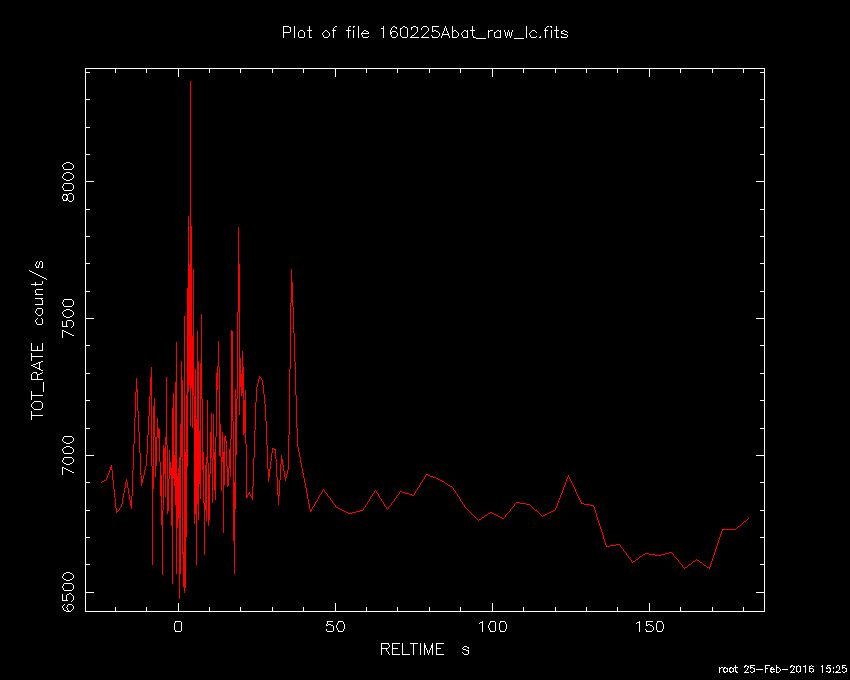
TITLE: GCN/SWIFT NOTICE
NOTICE_DATE: Thu 25 Feb 16 14:34:57 UT
NOTICE_TYPE: Swift-XRT Nack-Position
TRIGGER_NUM: 675998, Seg_Num: 0
POINT_RA: 164.227d {+10h 56m 55s} (J2000)
POINT_DEC: +53.637d {+53d 38' 14"} (J2000)
IMG_START_DATE: 17443 TJD; 56 DOY; 16/02/25
IMG_START_TIME: 52490.62 SOD {14:34:50.62} UT, 834.2 [sec] since BAT Trigger Time
COUNTS: 1 Min_needed= 20
STD_DEV: 0.00 Max_StdDev_for_Good=28.44 [arcsec]
PH2_ITER: 0 Max_iter_allowed= 4
ERROR_CODE: 1
COMMENTS: SWIFT-XRT Nack Position.
COMMENTS: No source found in the image.
TITLE: GCN/SWIFT NOTICE
NOTICE_DATE: Thu 25 Feb 16 14:37:48 UT
NOTICE_TYPE: Swift-UVOT Source List
TRIGGER_NUM: 675998, Seg_Num: 0
POINT_RA: 164.227d {+10h 56m 55s} (J2000)
POINT_DEC: +53.637d {+53d 38' 12"} (J2000)
POINT_ROLL: 8.492d
IMG_START_DATE: 17443 TJD; 56 DOY; 16/02/25
IMG_START_TIME: 52495.52 SOD {14:34:55.52} UT, 839.1 [sec] since BAT Trigger Time
FILTER: 10, White
BKG_MEAN: 1.636
N_STARS: 74
X_OFFSET: 640 [pixels]
Y_OFFSET: 519 [pixels]
X_MAX: 1599 [pixels]
Y_MAX: 1478 [pixels]
DET_THRESH: 11
PHOTO_THRESH: 5
SL_URL: sw00675998000msufc0839.fits
SUN_POSTN: 338.18d {+22h 32m 43s} -9.15d {-09d 09' 11"}
SUN_DIST: 135.31 [deg] Sun_angle= 11.6 [hr] (West of Sun)
MOON_POSTN: 187.80d {+12h 31m 13s} -1.68d {-01d 40' 37"}
MOON_DIST: 58.55 [deg]
MOON_ILLUM: 93 [%]
GAL_COORDS: 153.58, 56.13 [deg] galactic lon,lat of the pointing direction
ECL_COORDS: 140.63, 42.43 [deg] ecliptic lon,lat of the pointing direction
COMMENTS: SWIFT-UVOT Source List.
TITLE: GCN/SWIFT NOTICE
NOTICE_DATE: Thu 25 Feb 16 14:38:18 UT
NOTICE_TYPE: Swift-UVOT Processed Source List
TRIGGER_NUM: 675998, Seg_Num: 0
POINT_RA: 164.227d {+10h 56m 55s} (J2000)
POINT_DEC: +53.637d {+53d 38' 12"} (J2000)
POINT_ROLL: 8.492d
IMG_START_DATE: 17443 TJD; 56 DOY; 16/02/25
IMG_START_TIME: 52495.52 SOD {14:34:55.52} UT, 839.1 [sec] since BAT Trigger Time
FILTER: 10, White
BKG_MEAN: 1.636
N_STARS: 74
X_OFFSET: 640 [pixels]
Y_OFFSET: 519 [pixels]
X_MAX: 1599 [pixels]
Y_MAX: 1478 [pixels]
DET_THRESH: 11
PHOTO_THRESH: 5
SL_URL: sw00675998000msufc0839.fits
SUN_POSTN: 338.18d {+22h 32m 43s} -9.15d {-09d 09' 11"}
SUN_DIST: 135.31 [deg] Sun_angle= 11.6 [hr] (West of Sun)
MOON_POSTN: 187.81d {+12h 31m 14s} -1.68d {-01d 40' 42"}
MOON_DIST: 58.55 [deg]
MOON_ILLUM: 93 [%]
GAL_COORDS: 153.58, 56.13 [deg] galactic lon,lat of the pointing direction
ECL_COORDS: 140.63, 42.43 [deg] ecliptic lon,lat of the pointing direction
COMMENTS: SWIFT-UVOT Processed Source List.
COMMENTS: All 4 attachments are included.
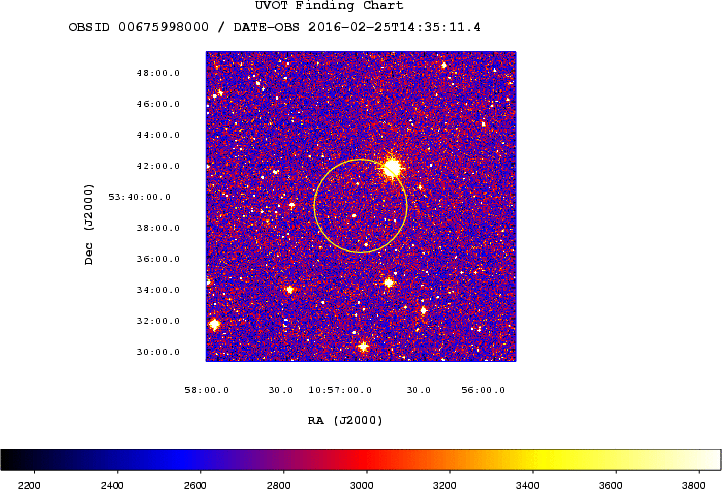
TITLE: GCN/SWIFT NOTICE
NOTICE_DATE: Thu 25 Feb 16 14:38:45 UT
NOTICE_TYPE: Swift-XRT Position
TRIGGER_NUM: 675998, Seg_Num: 0
GRB_RA: 164.2284d {+10h 56m 54.81s} (J2000),
164.4683d {+10h 57m 52.38s} (current),
163.4821d {+10h 53m 55.70s} (1950)
GRB_DEC: +53.6699d {+53d 40' 11.6"} (J2000),
+53.5833d {+53d 34' 59.9"} (current),
+53.9373d {+53d 56' 14.3"} (1950)
GRB_ERROR: 3.8 [arcsec radius, statistical plus systematic, 90% containment]
GRB_INTEN: 1.00e-10 [erg/cm2/sec]
GRB_SIGNIF: 10.00 [sigma]
IMG_START_DATE: 17443 TJD; 56 DOY; 16/02/25
IMG_START_TIME: 52500.00 SOD {14:35:00.00} UT, 843.6 [sec] since BAT Trigger Time
TAM[0-3]: 100.00 100.00 100.00 100.00
AMPLIFIER: 1
WAVEFORM: 31
SUN_POSTN: 338.18d {+22h 32m 43s} -9.15d {-09d 09' 10"}
SUN_DIST: 135.28 [deg] Sun_angle= 11.6 [hr] (West of Sun)
MOON_POSTN: 187.81d {+12h 31m 15s} -1.68d {-01d 40' 46"}
MOON_DIST: 58.58 [deg]
MOON_ILLUM: 93 [%]
GAL_COORDS: 153.54, 56.11 [deg] galactic lon,lat of the burst
ECL_COORDS: 140.61, 42.46 [deg] ecliptic lon,lat of the burst
COMMENTS: SWIFT-XRT Coordinates.
COMMENTS: This Notice was ground-generated -- not flight-generated.
COMMENTS: TAM values, flux and significance fields are not valid.
COMMENTS: This position was automatically generated on the ground using
COMMENTS: Photon Counting data telemetered via TDRSS (SPER data).
COMMENTS: See http://www.swift.ac.uk/sper/docs.php for details.
COMMENTS: The probability that this is a serendipitous source in the
COMMENTS: SPER window is 0.58% < P(seren) < 1.1%.
TITLE: GCN/SWIFT NOTICE
NOTICE_DATE: Thu 25 Feb 16 14:39:11 UT
NOTICE_TYPE: Swift-UVOT Image
TRIGGER_NUM: 675998, Seg_Num: 0
POINT_RA: 164.227d {+10h 56m 55s} (J2000)
POINT_DEC: +53.637d {+53d 38' 12"} (J2000)
ROLL: 8.492d
IMG_START_DATE: 17443 TJD; 56 DOY; 16/02/25
IMG_START_TIME: 52495.52 SOD {14:34:55.52} UT, 839.1 [sec] since BAT Trigger Time
FILTER: 10, White
EXPOSURE_ID: 478103711
X_OFFSET: 959 [pixels]
Y_OFFSET: 838 [pixels]
WIDTH: 160 [pixels]
HEIGHT: 160 [pixels]
X_GRB_POS: 1119
Y_GRB_POS: 998
BINNING_INDEX: 1
IM_URL: sw00675998000msuni0855.fits
SUN_POSTN: 338.18d {+22h 32m 43s} -9.15d {-09d 09' 10"}
SUN_DIST: 135.31 [deg] Sun_angle= 11.6 [hr] (West of Sun)
MOON_POSTN: 187.82d {+12h 31m 16s} -1.68d {-01d 40' 50"}
MOON_DIST: 58.56 [deg]
MOON_ILLUM: 93 [%]
GAL_COORDS: 153.58, 56.13 [deg] galactic lon,lat of the pointing direction
ECL_COORDS: 140.63, 42.43 [deg] ecliptic lon,lat of the pointing direction
COMMENTS: SWIFT-UVOT Image.
COMMENTS: The GRB Position came from the Window Position in the Mode Command.
COMMENTS: The image has 2x2 binning (compression).
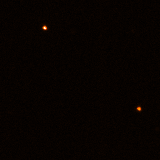
TITLE: GCN/SWIFT NOTICE
NOTICE_DATE: Thu 25 Feb 16 14:39:33 UT
NOTICE_TYPE: Swift-UVOT Processed Image
TRIGGER_NUM: 675998, Seg_Num: 0
POINT_RA: 164.227d {+10h 56m 55s} (J2000)
POINT_DEC: +53.637d {+53d 38' 12"} (J2000)
ROLL: 8.492d
IMG_START_DATE: 17443 TJD; 56 DOY; 16/02/25
IMG_START_TIME: 52495.52 SOD {14:34:55.52} UT, 839.1 [sec] since BAT Trigger Time
FILTER: 10, White
EXPOSURE_ID: 478103711
X_OFFSET: 959 [pixels]
Y_OFFSET: 838 [pixels]
WIDTH: 160 [pixels]
HEIGHT: 160 [pixels]
X_GRB_POS: 1119
Y_GRB_POS: 998
BINNING_INDEX: 1
IM_URL: sw00675998000msuni0855.fits
SUN_POSTN: 338.18d {+22h 32m 43s} -9.15d {-09d 09' 09"}
SUN_DIST: 135.31 [deg] Sun_angle= 11.6 [hr] (West of Sun)
MOON_POSTN: 187.82d {+12h 31m 16s} -1.68d {-01d 40' 53"}
MOON_DIST: 58.56 [deg]
MOON_ILLUM: 93 [%]
GAL_COORDS: 153.58, 56.13 [deg] galactic lon,lat of the pointing direction
ECL_COORDS: 140.63, 42.43 [deg] ecliptic lon,lat of the pointing direction
COMMENTS: SWIFT-UVOT Processed Image.
COMMENTS: The GRB Position came from the Window Position in the Mode Command.
COMMENTS: The image has 2x2 binning (compression).
COMMENTS: All 4 attachments are included.
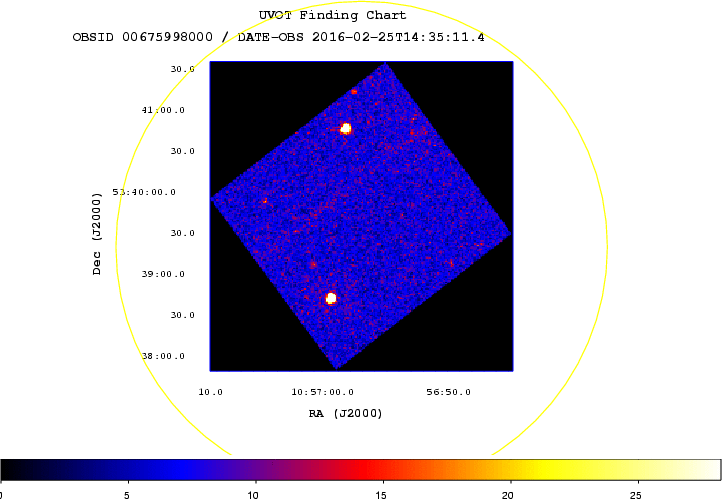
RA(J2000) = 10h 56m 58s Dec(J2000) = +53d 39' 19"with an uncertainty of 3 arcmin (radius, 90% containment, including systematic uncertainty). The BAT light curve showed multiple spikes over a 50 second interval. The peak count rate was ~1500 counts/sec (15-350 keV) at ~3 sec after the trigger.
RA(J2000) = 10h 56m 54.83s Dec(J2000) = +53d 40' 11.7"with an uncertainty of 3.8 arcseconds (radius, 90% containment). This location is 60 arcseconds from the BAT onboard position, within the BAT error circle. This position may be improved as more data are received; the latest position is available at http://www.swift.ac.uk/sper. We cannot determine whether the source is fading at the present time.
RA (J2000): 10h 56m 55.13s Dec (J2000): +53d 40' 11.9"with an uncertainty of 1.7 arcsec (radius, 90% confidence).
Date UT start t-T0 Filter Exp. UL (3sigma)
(mid, days) (s)
2016-02-25 14:47:35 0.01903 R 1*90 18.90
T0+[sec] MID-UT T-EXP[sec] g' Rc Ic ------------------------------------------------------------------------------------------- 378 14:27:14 270 > 19.4 18.2 +/- 0.1 17.1 +/- 0.2 ------------------------------------------------------------------------------------------- T0+ : Elapsed time after the burst T-EXP: Total Exposure timeWe used GSC2.3 catalog for flux calibration.
#T0+[day] MID-UT T-EXP[sec] g' Rc Rc_err Ic Ic_err ------------------------------------------------------------------ 0.00777 14:32:08 540.0 >19.4 18.6 0.2 17.8 0.2 ------------------------------------------------------------------ T0+ : Elapsed time after the burst [day] T-EXP: Total Exposure time [sec]
RA (J2000): 10 56 55.18 Dec (J2000): +53 40 13.7with an uncertainty of 0.5 arc seconds. The source is seen in all three filters, and has magnitudes J~20.6 mag and Ks~19.2 mag (Vega magnitudes, calibrated using 2MASS objects in the field).
Total column: 5.7 (+3.0, -2.7) x 10^20 cm^-2 Galactic foreground: 9.7 x 10^19 cm^-2 Excess significance: 2.9 sigma Photon index: 2.11 (+/-0.14)If the light curve continues to decay with a power-law decay index of 0.91, the count rate at T+24 hours will be 0.013 count s^-1, corresponding to an observed (unabsorbed) 0.3-10 keV flux of 3.9 x 10^-13 (4.5 x 10^-13) erg cm^-2 s^-1.
Filter T_start(s) T_stop(s) Exp(s) Mag white_FC 839 989 147 >20.7 white 839 2657 342 >21.1 v 1121 2708 194 >19.9 b 1047 2632 194 >20.8 u 1022 2608 156 >19.9 w1 998 3036 311 >20.1 m2 1494 2912 236 >20.2 w2 1446 2683 78 >20.0The magnitudes in the table are not corrected for the Galactic extinction due to the reddening of E(B-V) = 0.01 in the direction of the burst (Schlegel et al. 1998).
r > 24.09 i =3D 23.03 +/- 0.16 Z =3D 22.17 +/- 0.19 Y > 22.35 J =3D 22.06 +/- 0.33 H > 21.74These magnitudes are in the AB system and are not corrected for Galactic extinction in the direction of the GRB. The r-band faintness suggests that this may be a moderate to high-z source. Fitting Milky Way, LMC, and SMC Exctinction Laws in Addition to the IGM (see, Littlejohns, et al. 2014), we find a photo-z of 5.54 (+0.35,-5.11; 90% conf.). Hence, a high-z solution is preferred, but a low-z origin is not ruled out.
Id t_start-t_trigger t_mean-t_trig Exp.time Limit
s s s unfiltered
767291 204 224 40 17.4
767293 256 281 50 17.6
767295 318 348 60 17.0
769139 318 768 600 18.7
769244 318 1187 1200 19.0
Our unfiltered magnitude calibrated to USNOB1 stars as m =0.2B + 0.8R .
RA(J2000) = 10h 56m 52.1s Dec(J2000) = +53d 39' 33.6"with an uncertainty of 1.9 arcmin, (radius, sys+stat, 90% containment). The partial coding was 35%.
r =3D 23.84 +/- 0.18 i =3D 23.13 +/- 0.11 Z =3D 22.71 +/- 0.18 Y =3D 22.40 +/- 0.22 J =3D 22.44 +/- 0.26 H =3D 22.04 +/- 0.26These magnitudes are in the AB system and are not corrected for Galactic extinction in the direction of the GRB.
Mid Time Exposure Filter Magnitude (hr) (s) ------------------------------------------------------- 12.83 9x300 R > 21.5 ------------------------------------------------------- USNO-B1.0_id R1 R2 1436-0208445 14.73 15.26 14.995 1436-0208447 13.55 13.74 13.645
Date UT start t-T0 Filter Exp. OT Err. UL
(mid, days) (s)
*2016-02-25 14:45:56 0.07022 R 87*90 20.75 0.16 21.4
2016-02-25 15:30:59 0.09576 R 77*90 21.36 0.20 21.9
2016-02-25 17:58:10 0.18146 R 52*90 n/d n/a 21.7
*) Zeiss-1000 West telescope observations
Photometry is based on SDSS-DR9 nearby stars
SDSS-DR9_id R(Lupton) J105614.20+533500.1 15.35 J105714.63+533304.9 14.36 J105658.91+533304.1 15.77